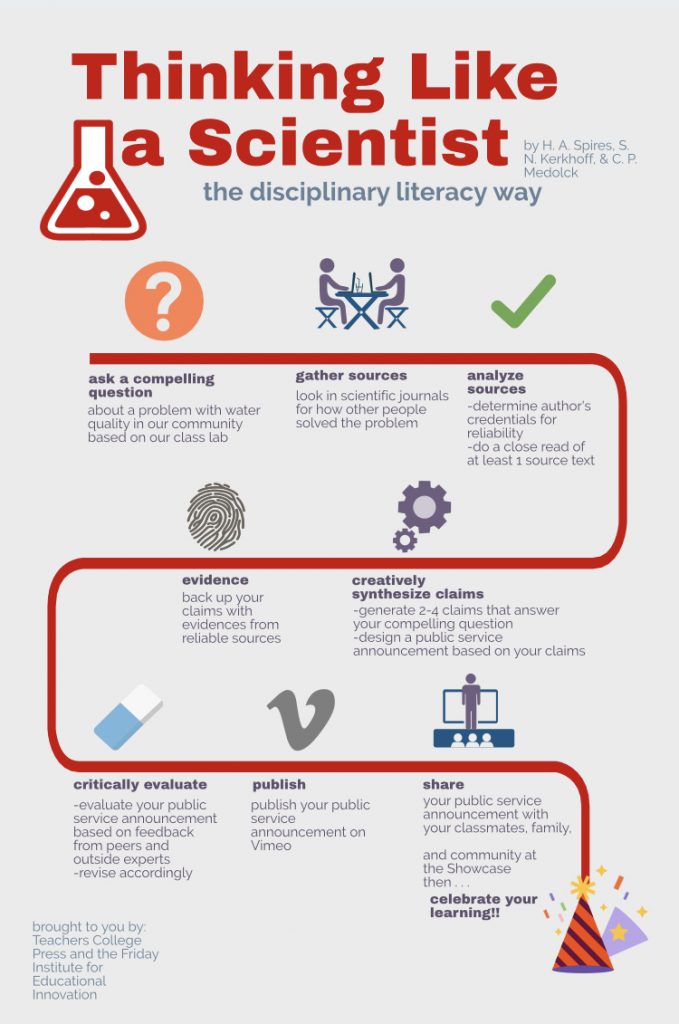By: Hiller Spires and Shea Kerkhoff, authors of Read, Write, Inquire: Disciplinary Literacy in Grades 6–12
Scientific inquiry requires literacy in many of the phases. Scientists read scientific journal articles and write explanations to support scientific hypotheses. They share their research results with other scientists and the public through speaking and writing. Then other scientists read these results in a scientific journal and the inquiry cycle begins again.
In the infographic pictured, we walk learners through a scientific inquiry on water quality in their community. We launched this inquiry with a lab testing the chemicals found in the stream behind the school. The inquiry starts by asking a compelling question about a problem with water quality in our community based on those lab results. Then learners conduct Internet research to gather sources on water quality. We conduct a close read with learners to model how to read a scientific journal article before they analyze their own sources. The next phase in the inquiry process is to creatively synthesize claims and evidences. We then critically evaluate and revise to make sure that the claims are accurate and fully supported by the evidence we analyzed. Finally, learners share their products with the larger community and celebrate their learning and hard work.

